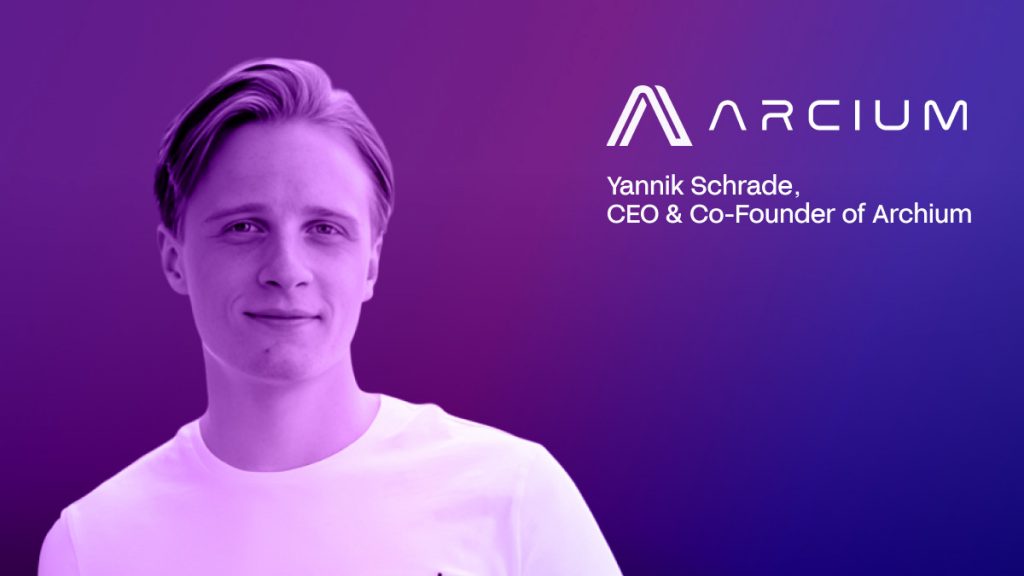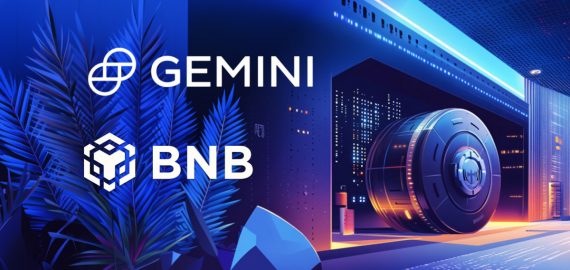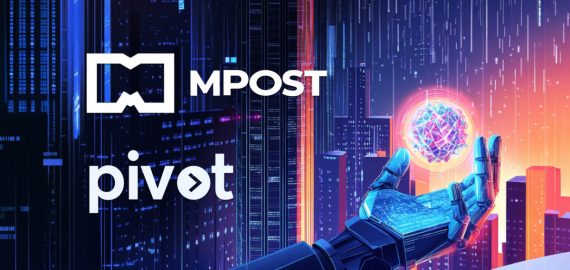Supercharging the Blockchain: Arcium’s Parallel Execution Model and the Approach to Confidential Computing


In Brief
Yannik Schrade discusses the transformative role of Web3 and decentralized confidential computing in enhancing blockchain privacy, scalability, and the future of secure data processing.

In this conversation, we delve into the world of Web3 and confidential computing with Yannik Schrade, CEO & Co-Founder of Arcium. Yannik shares insights on how Arcium is transforming blockchain privacy and scalability. From his journey into Web3 to the potential impact of decentralized confidential computing on various industries, Schrade offers a glimpse into the future of secure, trustless data processing.
Can you please share your journey to Web3?
My first project in Web3 was Arcium, but before we were called Arcium, we were called Elusive. Initially, we worked on on-chain transactional privacy using zero-knowledge proofs and combined that with confidential computing using MPC (Multi-Party Computation). Our goal was to add what we called “decentralized compliance” so that illicit activity was excluded from private transactions while ensuring no centralized entity could control this compliance mechanism.
I got started in Web3 essentially through zero-knowledge proofs. My interest stemmed from reading George Orwell’s “1984” as a child and wanting to prevent that scenario from becoming reality. After school, I studied law, founded my first startup, and then got into studying mathematics and computer science, which led me to zero-knowledge proofs.
Was it difficult after majoring in law to study math and all this technical stuff?
Not really, because I had taught myself programming when I was 12 years old and continued doing that throughout my life. Even while studying law, I was involved in a lot of legal tech projects and founded one of Germany’s largest legal tech associations. So, I always had the technical aspect in my life, but for some reason, I decided to study law as well.
How does Arcium’s approach to confidential computing differ from traditional hardware-based trusted execution environments, and what advantages does it have?
Trusted execution environments have shown vulnerabilities, as we saw recently with an exploit in Intel SGX where a root provisioning key was exfiltrated. A great example of this vulnerability is the Secret Network exploit, where the entire user privacy was undermined. Essentially, trusted execution environments are single points of failure and require a proprietary trusted supply chain.
Apple’s new trusted execution environments illustrate the enormous trust required, which doesn’t align with what we’re trying to achieve in Web3. They stated that they physically secure the supply of hardware chips from manufacturing plants to data centers, which is absurd if that’s the trust model we have to work with.
With Arcium, we’re trying to remove all trust and make it trustless. We achieve this by utilizing secure multi-party computation, which combines mathematics, cryptography, and distributed systems.
What are the key benefits of Arcium being designed as a chain-agnostic network? How does it impact its potential for adoption across different blockchain ecosystems?
At Arcium, we believe this technology should be accessible to everyone at any point. We think of Arcium as a global supercomputer that should be accessible on any blockchain, but also importantly, should be accessible without blockchain. Traditional enterprises should also be able to use this network without having to deploy smart contracts on a distributed ledger.
It’s about opening this network for blockchain use cases, which is why it’s so powerful to have asynchronous confidential computing on every network simultaneously. This fosters adoption because new use cases are enabled on all these different distributed ledgers.
How does Arcium’s parallel execution model contribute to its high throughput? What makes this approach different from other solutions on the market?
If we think of Arcium as a supercomputer, every node in the network is a core in that computer. A set of cores can be a computational cluster that runs a computation, but the network itself is sort of stateless. This means that the Arcium network doesn’t have to operate over some single sequential state that needs to be updated, with leaders being elected and consensus being found.
For Arcium, all those nodes are doing is running computations in parallel and running so many computations that the limiting factor becomes the speed of light.
How does Arcium’s approach to encrypted computation address the performance bottlenecks typically associated with fully homomorphic encryption?
Fully Homomorphic Encryption (FHE) is a great technology, especially on a theoretical level. However, on a practical level, it suffers greatly from latency penalties. In many cases, running a computation with Arcium compared to running it with some state-of-the-art FHE scheme is often tens of thousands of times faster.
We solve this problem by utilizing so-called somewhat homomorphic encryption within MPC. This allows us to take the efficient parts of FHE and, for the less efficient parts, have a more efficient, better solution.
Can you elaborate on the primary use cases for Arcium’s technology outside blockchain and Web3?
I think this is the most interesting aspect of what we’re building because most teams are just building technology that only serves crypto itself. But I believe the technology should serve a bigger use case, and for confidential computing, that’s definitely the case.
There’s a lot of need in the traditional space, both for enterprises and governmental organizations, to have confidential computing. One of the easiest-to-grasp examples nowadays would be artificial intelligence, specifically confidential machine learning.
What’s interesting about our technology is that by utilizing MPC as the core technology, we can introduce a new kind of collaborative element to secure computation. For example, we can combine previously completely isolated data silos and train a machine-learning model on this data without anyone holding that data ever having to share it with each other. Everyone remains the owner; nobody sees any of the data, yet new insights are possible.
How do you foresee the intersection of AI and computing in the future?
I think there are different aspects to that. Utilizing Arcium for artificial intelligence there are multiple benefits. One is that you can now think of artificial intelligence as end-to-end encrypted AI. On the learning side, all of the data used can remain private, and on the inference side, whatever you ask your model also remains private. The model itself remains private.
A tangible example would be in healthcare. If we have super sensitive patient data that cannot be shared, maybe due to regulation, and I, as an individual, wouldn’t want my sensitive patient data to be shared with some company that processes that data, with Arcium, I could be fine with sharing the data because it actually never gets shared. It’s always encrypted, and yet new insights are possible.
This notion of end-to-end encrypted artificial intelligence with no data having to be shared is very powerful. We are able to facilitate that because, with our architecture design, we have this trustless privacy, but at the same time, we also have efficiency.
How does Arcium’s approach to confidential computing potentially impact the scalability and interoperability of blockchain networks?
Arcium’s role is to be a dedicated network that focuses on one thing: efficient, trustless, confidential computations. Arcium is this Decentralized Confidential Computing (DCC) network that communicates with different blockchain networks and utilizes them to further improve trustlessness by having a cryptographically verifiable staking and slashing mechanism if some node misbehaves.
The scalability is impacted by this confidential computing being outsourced to this dedicated network, and the main ledger does not have to experience any slowdowns or consensus problems. Down the line, there can be more specialization for different networks and within networks.
For example, within the Arcium network, there can be specialization with nodes operating dedicated hardware. If there’s a node that really wants to focus on facilitating AI use cases, they will most likely be running some GPUs, which might not make sense as a requirement for normal blockchain networks.
What are the security implications of Arcium’s configurable setups? How does the platform ensure the custom configurations don’t introduce vulnerabilities?
Custom configurations in Arcium essentially mean users who want confidential computing create what we call an MXE (MPC Execution Environment) as an alternative to a TEE (Trusted Execution Environment). This is a virtual encrypted environment that exists in our network. For that environment, they can configure a set cluster of nodes that processes those computations.
Users can decide to run a cluster where they run a node, someone else runs a node, and they associate that with their MXE and input sensitive data. Alternatively, they could just use existing nodes from the network and not run any node themselves. So there’s this notion of being able to run permissioned clusters, permissionless clusters, semi-permissioned clusters, and have them in completely arbitrary sizes.
I think the configurability actually helps to reduce vulnerabilities and allows for more trustlessness than you would see otherwise.
How does Arcium’s architecture support or enable the creation of cross-chain confidential smart contracts? What unique challenges does it present?
Arcium itself doesn’t know what a smart contract is. It’s really a node that just knows the other nodes in the network and can run those secure computations efficiently. It just runs opcodes. We have our own distributed operating system, which we call ARCS OS, that those nodes run. It just executes commands in this operating system, but there’s no notion of assets, tokens, or moving things around.
Everything gets compiled down to this format, which is powerful because then we can have different wrappers, essentially different languages, that get compiled down to this format for different smart contract platforms. This, on its own, already enables the usage of this single network from different networks that normally might use completely different formats.
For cross-chain smart contracts, what’s important is verifiability. Our solution to verifiability is so-called public auditability for multiparty computations, which at the end of the day also just means verifying a proof and being able to know that some output of a computation is actually the correct output. With verifiability, just as we’ve seen with CKB (Nervos Common Knowledge Base), cross-chain interactions become possible.
How do you foresee the development of the blockchain industry in the next three years? Will there be any trends?
I think decentralized confidential computing and MPC especially will foster mainstream adoption. That’s something that the blockchain space really needs – applications that are very valuable also in the mainstream technology world.
Additionally, within the next three years, I think we’ll see a lot more institutional players utilize blockchain networks on the DeFi side. A part of that is having this confidentiality because, so far, a lot of use cases have not been possible to represent on the blockchain simply because, as an enterprise or a bank, you’re not able to have everything transparently visible for the entire world to see. By building this confidential computing technology, this now becomes possible. So I think that’s the essential building block that we have been lacking so far.
Can you share the roadmap of Arcium?
Right now, we are in a private testnet. We have many amazing teams already building applications with Arcium. We are expanding this private testnet over the course of the year, and then we’ll move into mainnet and expand multi-chain.
Disclaimer
In line with the Trust Project guidelines, please note that the information provided on this page is not intended to be and should not be interpreted as legal, tax, investment, financial, or any other form of advice. It is important to only invest what you can afford to lose and to seek independent financial advice if you have any doubts. For further information, we suggest referring to the terms and conditions as well as the help and support pages provided by the issuer or advertiser. MetaversePost is committed to accurate, unbiased reporting, but market conditions are subject to change without notice.
About The Author
Victoria is a writer on a variety of technology topics including Web3.0, AI and cryptocurrencies. Her extensive experience allows her to write insightful articles for the wider audience.
More articles

Victoria is a writer on a variety of technology topics including Web3.0, AI and cryptocurrencies. Her extensive experience allows her to write insightful articles for the wider audience.

















































